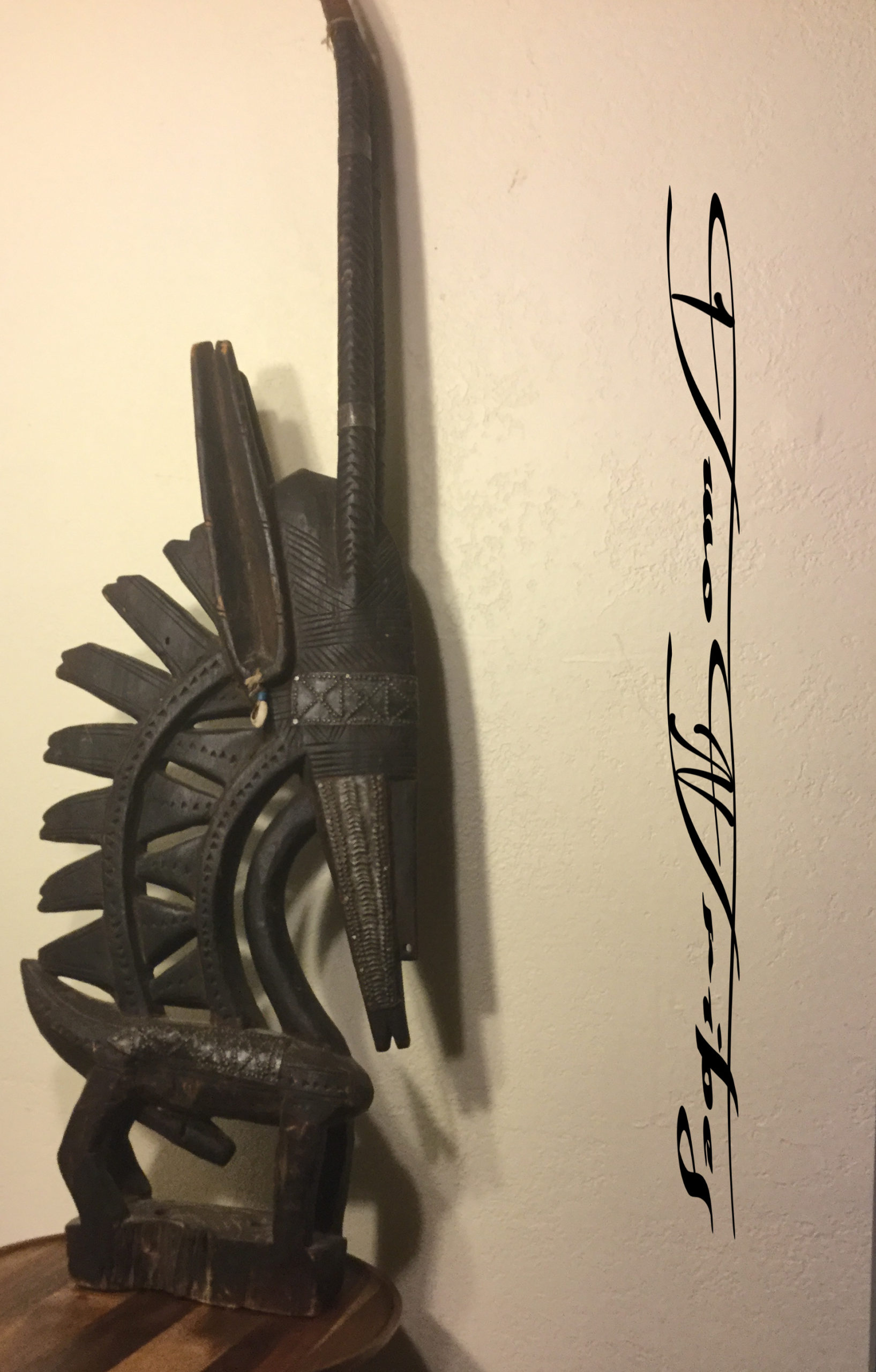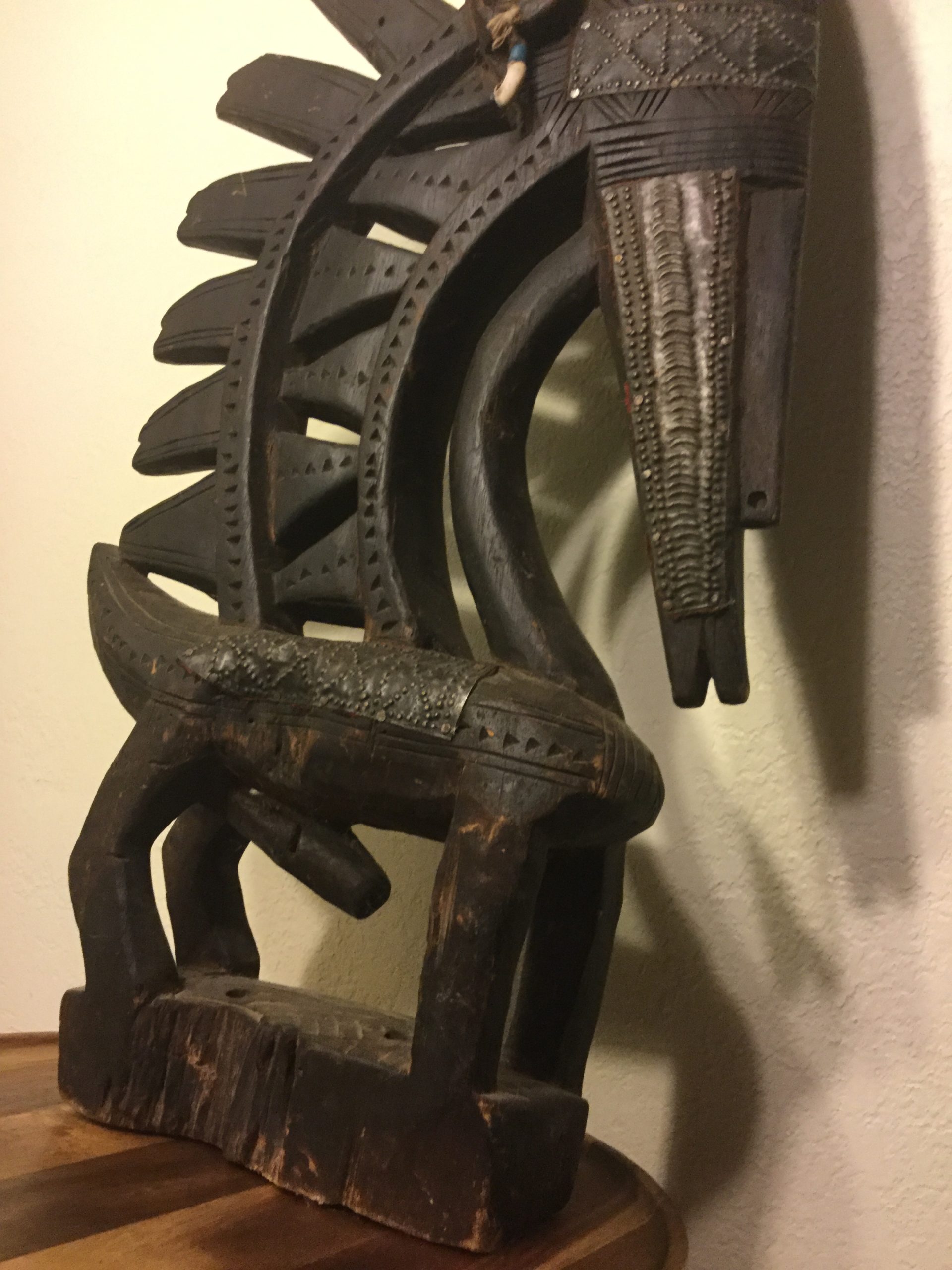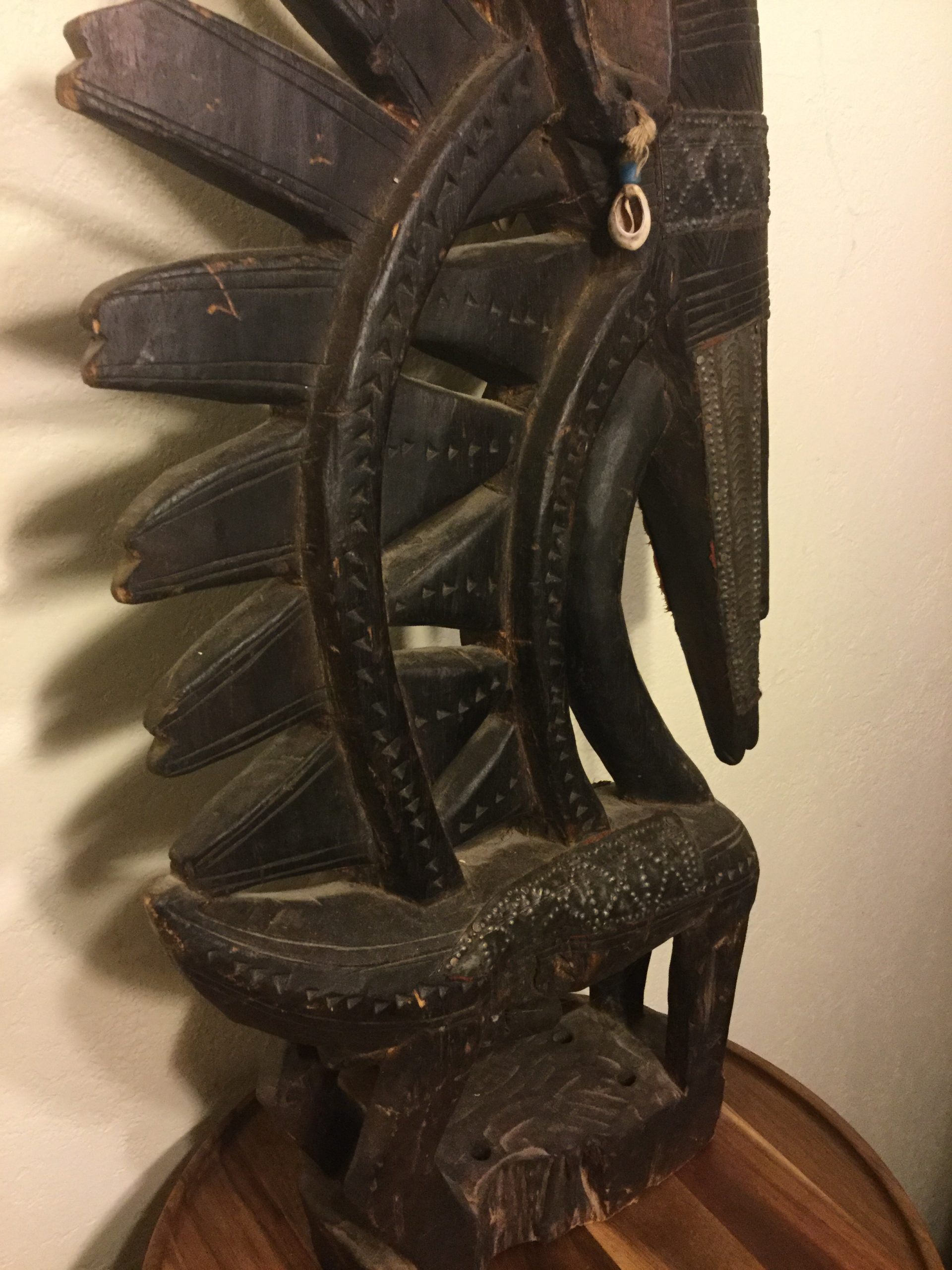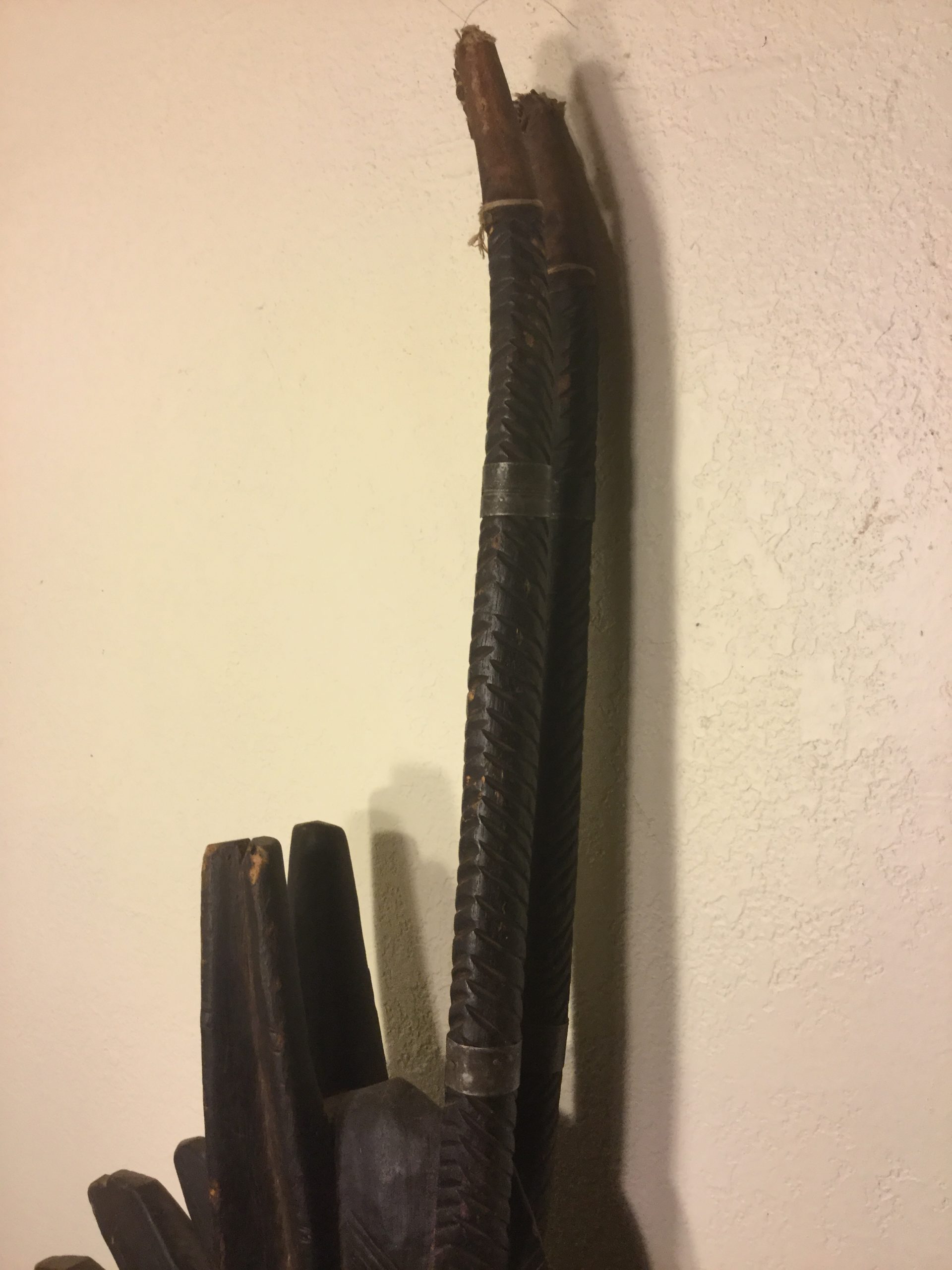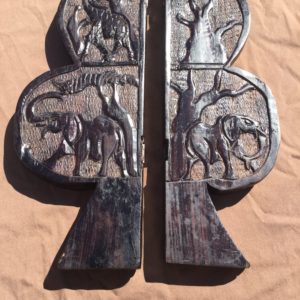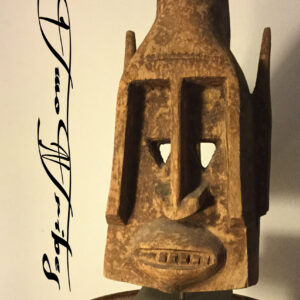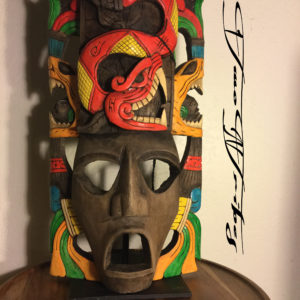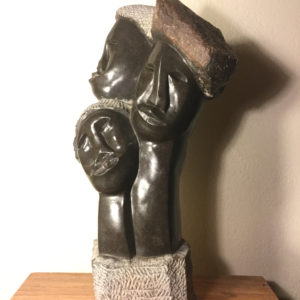Description
Paired male and female antelope headdresses were worn by young Bamana initiates during the Chi Wara performance. The performance embodied ideal quantities of the champion farmers, symbolizing the union of sun, earth, and water for plants to grow. Among the Bamana, oral traditions credit a mythical being named Ci Wara, a divine being half mortal and half animal, with the introduction of agriculture to the Bamana. Bamana society is primarily an agricultural one; even today the majority of Bamana peoples are subsistence farmers. These headdresses, also called ci wara, are carved to honor that original mythical being. Under Ci Wara’s guidance, humans first learned to cultivate the land and became prosperous and able farmers. When humans gradually became careless and wasteful, however, Ci Wara is said to have buried himself in the earth. To honor Ci Wara’s memory, the Bamana created a boli, a power object in which his spirit could reside, and carved headdresses such as these to represent him. Ci wara headdresses combine antelope features with those of other animals that are significant within Bamana culture, such as the earth-digging aardvark or the armored pangolin. The animals are observed in nature to excel in actions that are also critical to the success of the farming effort and, therefore, Bamana life. The elegant and tapered heads of the sculptures, along with the neck, ears, and horns, are modeled on antelope forms. The lower part of the sculpture refers to the aardvark. These headdresses are also characterized by decoration with pierced openwork designs, which create an interplay between positive and negative space, and finely incised geometric patterns, which add to their texture.
